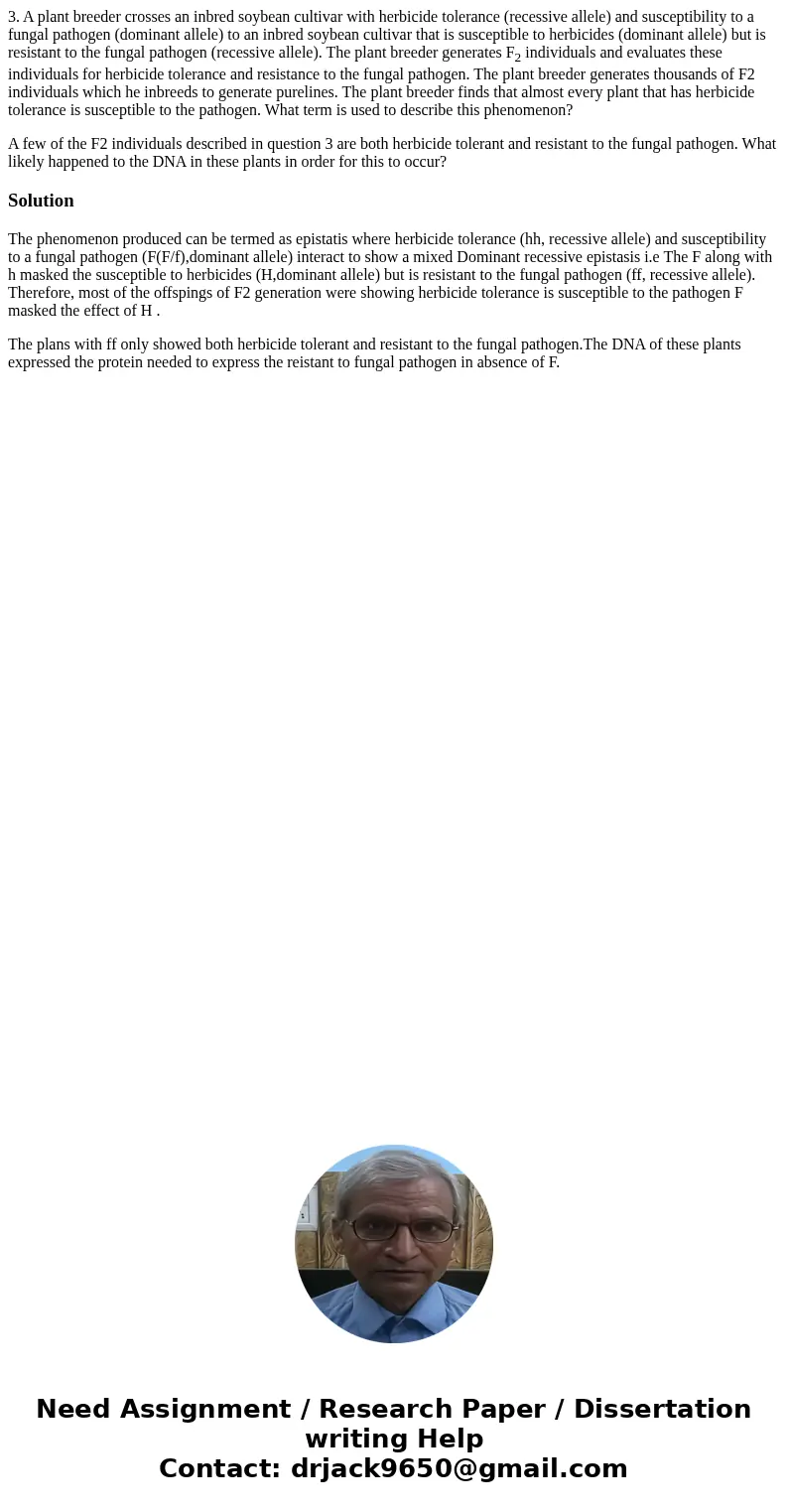3 A plant breeder crosses an inbred soybean cultivar with he
3. A plant breeder crosses an inbred soybean cultivar with herbicide tolerance (recessive allele) and susceptibility to a fungal pathogen (dominant allele) to an inbred soybean cultivar that is susceptible to herbicides (dominant allele) but is resistant to the fungal pathogen (recessive allele). The plant breeder generates F2 individuals and evaluates these individuals for herbicide tolerance and resistance to the fungal pathogen. The plant breeder generates thousands of F2 individuals which he inbreeds to generate purelines. The plant breeder finds that almost every plant that has herbicide tolerance is susceptible to the pathogen. What term is used to describe this phenomenon?
A few of the F2 individuals described in question 3 are both herbicide tolerant and resistant to the fungal pathogen. What likely happened to the DNA in these plants in order for this to occur?
Solution
The phenomenon produced can be termed as epistatis where herbicide tolerance (hh, recessive allele) and susceptibility to a fungal pathogen (F(F/f),dominant allele) interact to show a mixed Dominant recessive epistasis i.e The F along with h masked the susceptible to herbicides (H,dominant allele) but is resistant to the fungal pathogen (ff, recessive allele). Therefore, most of the offspings of F2 generation were showing herbicide tolerance is susceptible to the pathogen F masked the effect of H .
The plans with ff only showed both herbicide tolerant and resistant to the fungal pathogen.The DNA of these plants expressed the protein needed to express the reistant to fungal pathogen in absence of F.

 Homework Sourse
Homework Sourse